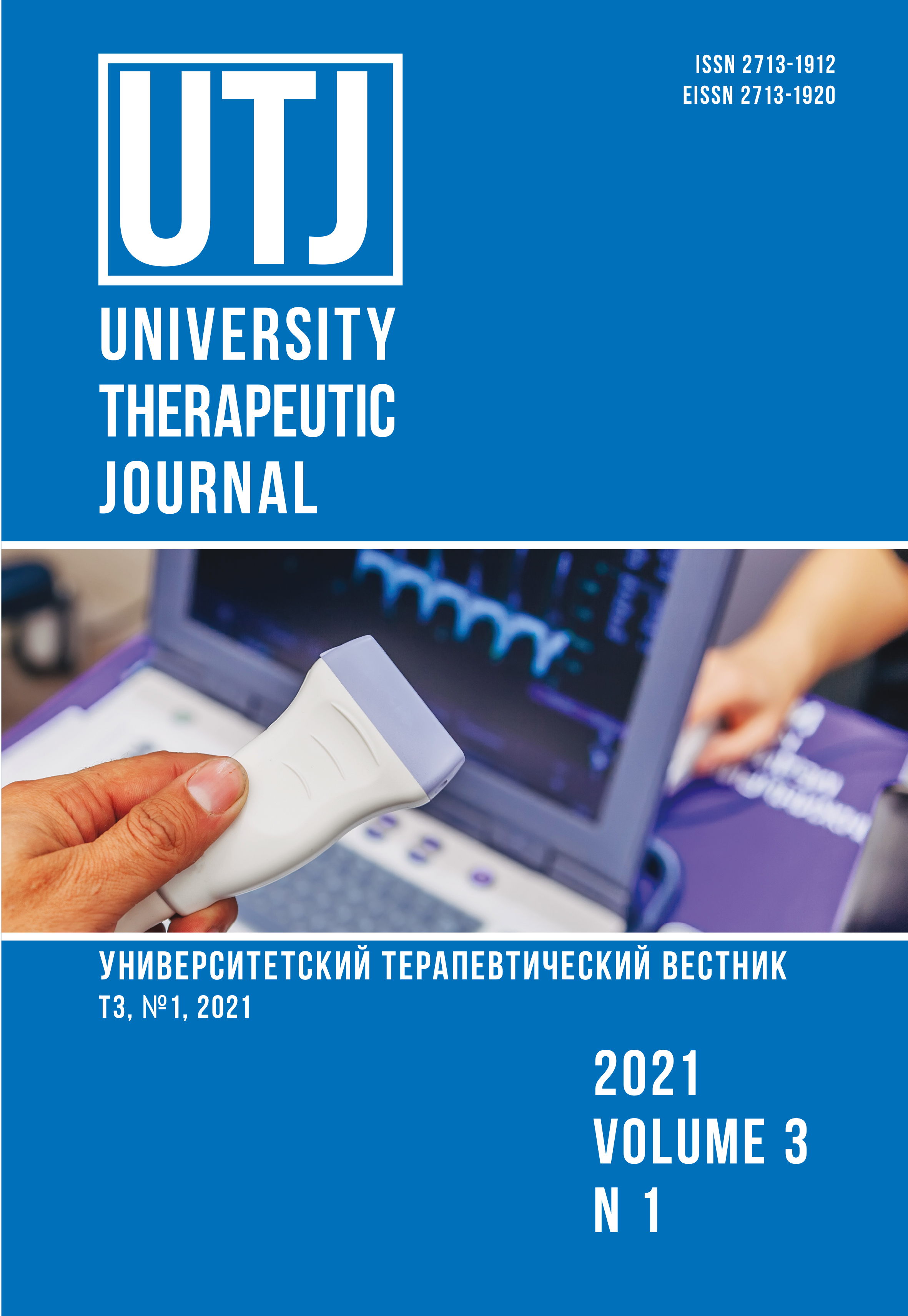FEATURES OF ANDROGEN METABOLISM IN COMMON DISEASES IN MEN OF REPRODUCTIVE AGE
Abstract
Background. Metabolism disorders in men of reproductive age common problem, its causes and relationship with other diseases and pathological conditions have not been studied enough. Purposes and tasks. To study the features of the metabolism of androgens in men of reproductive age with various endocrine and common chronic diseases and to assess the presence and severity of the disturbance of androgen metabolism and to develop recommendations for correction of androgen metabolism disorders. Methods. The study included 160 male patients aged 25-45 years. 40 of them at the time of the study were diagnosed type 2 diabetes, 20 - with II-III degrees of obesity, 20 - with uncompensated primary hypothyroidism, 20 - with compensated primary hypothyroidism, 20 - with chronic prostatitis without exacerbation, 20 - with prostate adenoma, 20 - with chronic bronchitis mediated by smoking (other patients from 6 groups were non smokers). All patients in the study groups are married, have a regular sex life (at least 2 sexual contacts per week), have children, do not use alcohol, drugs, have no history of cardiovascular diseases or mental disorders. The levels of luteinizing hormone, follicle stimulating hormone, testosterone, and its active metabolite dihydrotestosterone, levels of the blood estradiol, and thyroidotropic hormone and thyroxine levels were also investigated to identify patients with hypothyroidism (as well as for the determination of hypothyroidism compensation). The level of glycated hemoglobin was studied in patients with type 2 diabetes mellitus to determine the degree of compensation of carbohydrate metabolism disorders; patients with diabetes mellitus were divided into two subgroups: 1 - glycated hemoglobin level is up to 7.5%; 2 - glycated hemoglobin level is more than 7.5%. The risk of development of androgen metabolism disorders increases in patients with type 2 diabetes mellitus (the most expressed risk was found in uncompensated diabetes mellitus patients), obesity, prostate adenoma, chronic prostatitis, and with uncompensated hypothyroidism; compensation of hypothyroidism leads to the restoration of androgen metabolism. Among patients with chronic bronchitis, no obvious androgen metabolism disorders were found. Results. The risk of androgen metabolism disorders increases in type 2 diabetes (the most pronounced risk of uncompensated diabetes), obesity, prostate adenoma, chronic prostatitis, as well as uncompensated hypothyroidism, compensation for hypothyroidism leads to the restoration of androgen metabolism. Conclusions. Violation of androgen metabolism has a fairly high prevalence in various chronic diseases and endocrine disorders.


